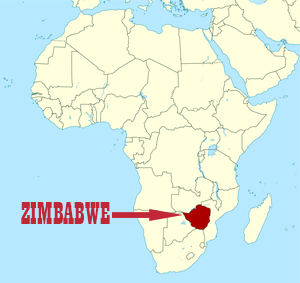 In
Zimbabwe, the Southern Africa Federation of the Disabled (SAFOD) works with
its national affiliate, the
Federation of Organisations of Disabled Persons in Zimbabwe (FODPZ).
FODPZ is a national disability umbrella body of various national
Disabled People’s Organisations (DPOs) established to achieve
equalization of opportunities for human rights and fundamental freedoms
for all persons with disabilities in Zimbabwe.
In
Zimbabwe, the Southern Africa Federation of the Disabled (SAFOD) works with
its national affiliate, the
Federation of Organisations of Disabled Persons in Zimbabwe (FODPZ).
FODPZ is a national disability umbrella body of various national
Disabled People’s Organisations (DPOs) established to achieve
equalization of opportunities for human rights and fundamental freedoms
for all persons with disabilities in Zimbabwe.
Zimbabwe ratified the
Convention on the Rights of Persons with Disabilities (UNCRPD) and
its Optional Protocol on 23 September 2013. Zimbabwe has
disability-friendly constitution that has a number of clauses
aligned with the Convention, taking a human rights approach to
disability issues. According to an article published in 2018 in the
African Journal of Disability (AJOD), the Constitution under section
22(4) calls for agencies to take measures to ensure accessibility by
Persons with Disabilities to all buildings, environments and
transportation to which other members of the public have access. By so
doing, further observe the authors, “the constitution implements
articles 9 and 19 of the UNCRPD, calling for states to ensure that PWDs
participate fully in community life and also live independently.”
Zimbabwe is one of the beneficiaries of the
series of SAFOD’s country-focused surveys on
Living Conditions among People with Activity Limitations in Developing
Countries carried out in Southern Africa which were part of SAFOD’s
regional initiative to establish baseline data on living conditions
among people with disabilities in Southern Africa, coordinate by the
SINTEF, on
behalf of the
Norwegian Federation of Organizations of Disabled Persons (FFO ) and
SAFOD. SAFOD and FODPZ's collaborated in these surveys in carried out in
2003 which found that.
around 45% of those with disabilities had
mobility difficulties (major or minor disability, paralysis), one third reported sensory impairments, while intellectual disabilities, learning disorders and emotional disorders
accounted for 11% of reported cases.
The survey further found that while
an overview of accessibility
to different services, facilities and
institutions gives a mixed picture, it is clear that certain of these
facilities are not generally accessible to all. Hotels, workplaces,
magistrate offices, recreational facilities and banks are all accessible
to less than 30% of individuals with disabilities. Health
care clinics, hospitals and public transport are on the other hand
reported to be accessible by the large majority.
Just like the other surveys carried out in
the other countries, assistive technology was one of the important
components of this research. However, data related to both assistive
technology and disability in general as illustrated above may be
challenged as outdated, considering that the surveys took place in 2013.
To address this challenge, in 2013, the
Ministry of Health
and Child Care (MOHCC), in partnership with
UNICEF
Zimbabwe, conducted another
Living
Conditions among Persons with Disability Survey to determine the
prevalence of disability; assess and document the degree of activity
limitations, participation restrictions and societal activities for
persons with disability; ascertain the specific vulnerabilities that
children with disability face' establish the accessibility of health and
social services for persons with disability; and generate data that
guides the development of policies and strategies that ensure equity and
opportunities for children and adults with disabilities
This
survey found that the prevalence of disability in Zimbabwe was
estimated at 7% which amounts to over 990,000 individuals. The major
disability types according to the sample were physical disability (31%),
visual impairment (26%), multiple disorders (13%), hearing impairment
(12%), intellectual disability (8%) and mental illness (6%).
In terms of the situation of assistive
technology in Zimbabwe, among individuals with disability, 14.4 %
reported that they were using an assistive device. The highest
proportion of users was in the urban areas. The most common type of
devices in use was mobility aids (70%). The second major type was devices used by individuals with visual problems.
While one of most common challenges related
to AT access in Southern Africa that has been cited repeatedly in
various forums is lack of local manufacturing of AT, a local initiative
in Zimbabwe called
Local Rehabilitation Workshop (LOREWO) was established to address
the situation. The initiative ensures availability of assistive devices
(wheel-chairs, walking aids, hearing aids etc.) suited to local
technologies and economic conditions; among other things.
